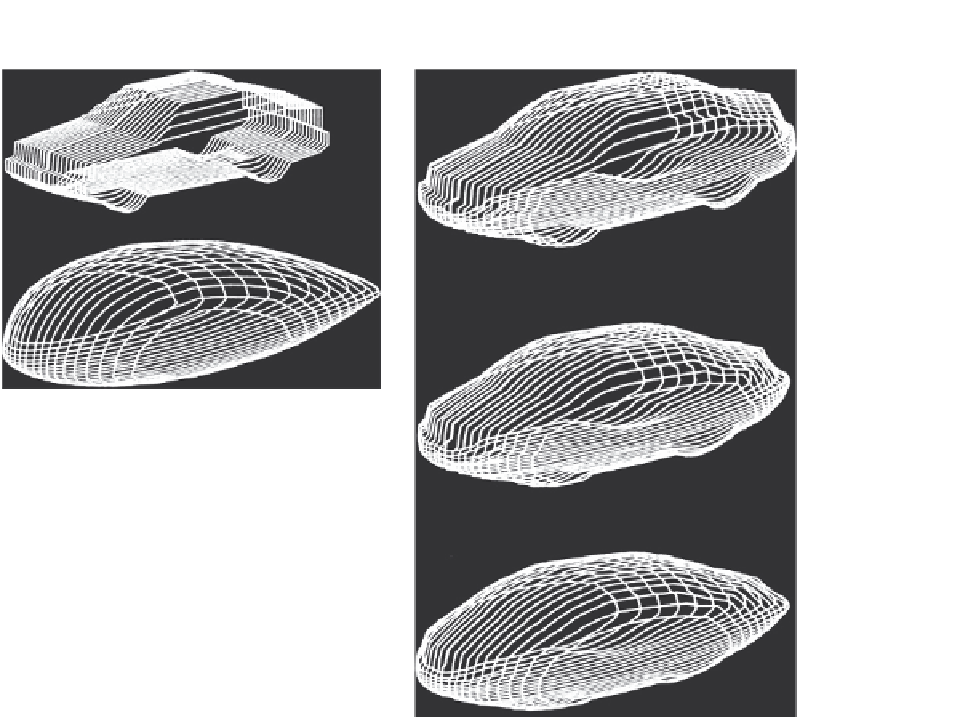Graphics Reference
In-Depth Information
Original shapes sliced into contours
Interpolated shapes
IEEE Computer Society).
#
Another approach fixes key vertices to the sphere. These vertices are either selected by the user or
automatically picked by being topmost, bottommost, leftmost, and so on. A spring-damper model is
then used to force the remaining vertices to the surface of the sphere as well as to encourage uniform
edge lengths.
If both objects are successfully mapped to the sphere (i.e., no self-overlap), the projected edges are
intersected and merged into one topology. The new vertices and edges are a superset of both object
topologies. They are then projected back onto both object surfaces. This produces two new object def-
initions, identical in shape to the original objects but now having the same vertex-edge topology, allow-
ing for a vertex-by-vertex interpolation to transform one object into the other.
Once the vertices of both objects have been mapped onto a unit sphere, edges map to circular arcs on
the sphere. The following description of the algorithm to merge the topologies follows that found in



Search WWH ::

Custom Search